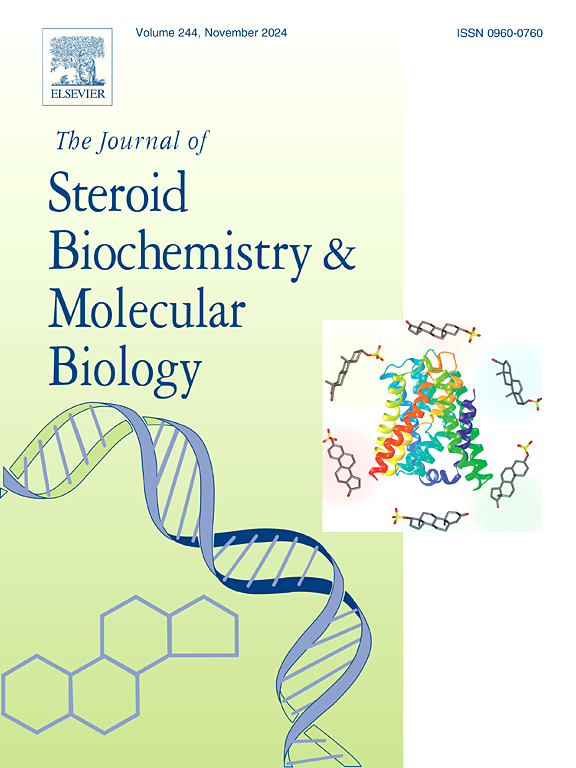From lipids to glucose: Investigating the role of dyslipidemia in the risk of insulin resistance
IF 2.5
2区 生物学
Q3 BIOCHEMISTRY & MOLECULAR BIOLOGY
Journal of Steroid Biochemistry and Molecular Biology
Pub Date : 2025-03-28
DOI:10.1016/j.jsbmb.2025.106744
引用次数: 0
Abstract
Dyslipidemia is recognized as one of the most prevalent metabolic disorders and is frequently associated with other prevalent conditions, particularly diabetes mellitus. There appears to be a bidirectional connection between these two metabolic disorders. While considerable research has focused on how insulin resistance can lead to lipid abnormalities, the reverse relationship specifically, how dyslipidemia could assist in developing insulin resistance and diabetes mellitus has received relatively less attention. This review aims to comprehensively evaluate the mechanisms through which dyslipidemia can induce insulin resistance. Dyslipidemia is primarily classified into three main categories: hypercholesterolemia, hypertriglyceridemia, and low levels of HDL. These conditions may promote insulin resistance across multiple pathways, including the accumulation of lipid metabolites, dysfunction of pancreatic β-cells, increased reactive oxygen species, endoplasmic reticulum stress and inflammation, endothelial dysfunction, alterations in adiponectin levels, changes in bile acid composition and concentration, and dysbiosis of gut microbiota. However, further investigation is required to fully elucidate the cellular and molecular mechanisms underlying the relationship between lipid disorders and insulin resistance. Emphasizing such research could facilitate the development of therapeutic strategies targeting both conditions simultaneously.
从脂质到葡萄糖:调查血脂异常在胰岛素抵抗风险中的作用
血脂异常被认为是最普遍的代谢性疾病之一,并且经常与其他常见疾病,特别是糖尿病相关。这两种代谢紊乱之间似乎有一种双向联系。虽然大量的研究集中在胰岛素抵抗如何导致脂质异常上,但相反的关系,特别是血脂异常如何有助于胰岛素抵抗和糖尿病的发展,却得到相对较少的关注。本文旨在全面探讨血脂异常诱导胰岛素抵抗的机制。血脂异常主要分为三大类:高胆固醇血症、高甘油三酯血症和低水平HDL。这些情况可能通过多种途径促进胰岛素抵抗,包括脂质代谢物的积累、胰腺β细胞的功能障碍、活性氧的增加、内质网应激和炎症、内皮功能障碍、脂联素水平的改变、胆汁酸组成和浓度的变化以及肠道微生物群的生态失调。然而,需要进一步的研究来充分阐明脂质紊乱和胰岛素抵抗之间关系的细胞和分子机制。强调这样的研究可以促进同时针对这两种情况的治疗策略的发展。
本文章由计算机程序翻译,如有差异,请以英文原文为准。
求助全文
约1分钟内获得全文
求助全文
来源期刊
CiteScore
8.60
自引率
2.40%
发文量
113
审稿时长
46 days
期刊介绍:
The Journal of Steroid Biochemistry and Molecular Biology is devoted to new experimental and theoretical developments in areas related to steroids including vitamin D, lipids and their metabolomics. The Journal publishes a variety of contributions, including original articles, general and focused reviews, and rapid communications (brief articles of particular interest and clear novelty). Selected cutting-edge topics will be addressed in Special Issues managed by Guest Editors. Special Issues will contain both commissioned reviews and original research papers to provide comprehensive coverage of specific topics, and all submissions will undergo rigorous peer-review prior to publication.

 求助内容:
求助内容: 应助结果提醒方式:
应助结果提醒方式:


